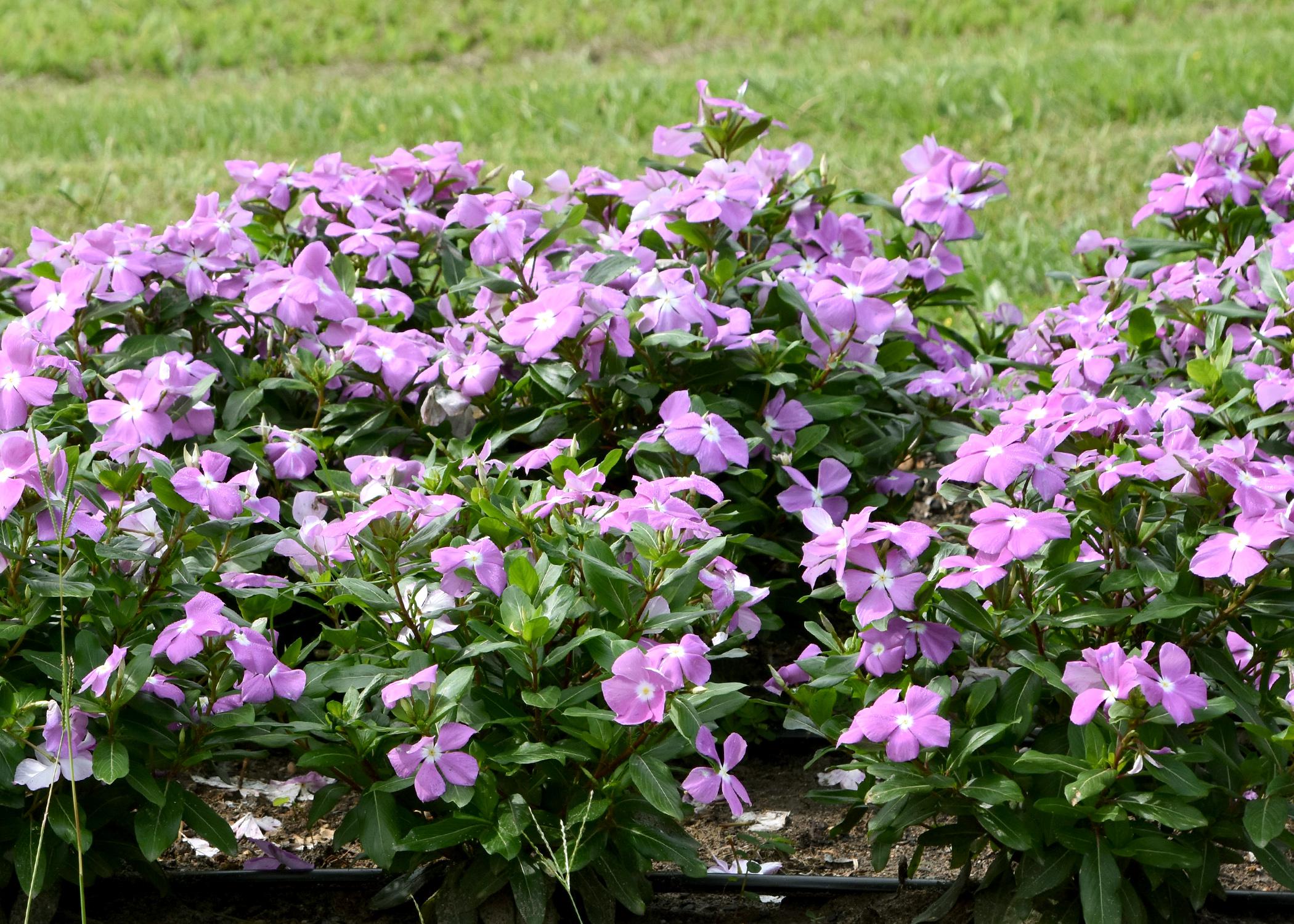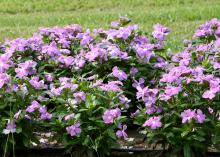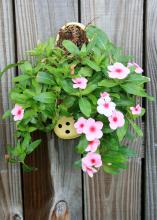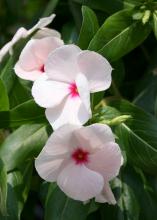Information Possibly Outdated
The information presented on this page was originally released on June 15, 2015. It may not be outdated, but please search our site for more current information. If you plan to quote or reference this information in a publication, please check with the Extension specialist or author before proceeding.
Colorful vincas thrive in summer landscapes
Our gardens and landscapes are heating up, and for hot summer color, you just can’t beat the annual vinca.
In my opinion, vinca is one of those perfect landscape plants. It produces loads of color and handles the high heat and dry conditions of our Mississippi summers.
Some of the very best vinca plantings I have seen were growing in raised beds. But in some years, entire planting beds of vincas seemed to fail almost overnight. A common characteristic of these failures is wet soil. Vinca plants do not like to grow with their feet wet.
Another probable cause is cool weather. I know we all want to get the summer color out as soon as possible, but planting too early in the spring before temperatures start to rise can set up the conditions for root disease.
To address this potential problem, I like to recommend the Cora vinca series. Cora selections, along with Nirvana vinca, have the advantage of a high degree of tolerance to the disease problems that can impact other vinca selections.
Cora vinca has attractive, dark-green foliage with a leathery look and texture. It is the perfect background for the heavy production of colorful flowers. These plants are available as upright growers and also as my favorite type, the Cascade with a trailing habit.
Upright Coras will grow to about 14 inches tall with a wider spread. Their color options include white, lavender, violet, strawberry and red.
Cora Cascade vincas produce plants with good branching that create a nice, mounded mass 8 inches tall and up to 36 inches wide. The trailing growth habit is perfect for showing off big and showy flowers that come in colors of cherry, lilac, peach blush, polka dot and strawberry. I’ve gotten creative with the Cora Cascade peach blush in my landscape by planting them in Crocs repurposed as sconces on my fence. My neighbors just love my Croc Pots.
Just remember these tips when planting vincas in your garden and landscape for the best success. Vincas will always flower and grow best when planted in the full sun in raised landscape beds. The raised bed helps to achieve optimum planting soil drainage. This advantage is important because wet feet will cause flowering vincas to develop root rot problems.
You should always wait to plant until after May 1, when the landscape soil has warmed up. These plants are heavy feeders, so be sure to incorporate a quality slow-release fertilizer at planting. Monthly feedings with a water-soluble 20-20-20 or 20-10-20 will keep those flowers blooming.
Mulch with pine straw instead of a heavier mulch, such as pine or cypress bark, to allow better air movement through the mulch. While vincas are drought tolerant during extended dry periods, the plants will benefit from some supplemental irrigation. But don’t water overhead because it can splash disease organisms onto the plants. I recommend using drip irrigation applied directly to the soil.










